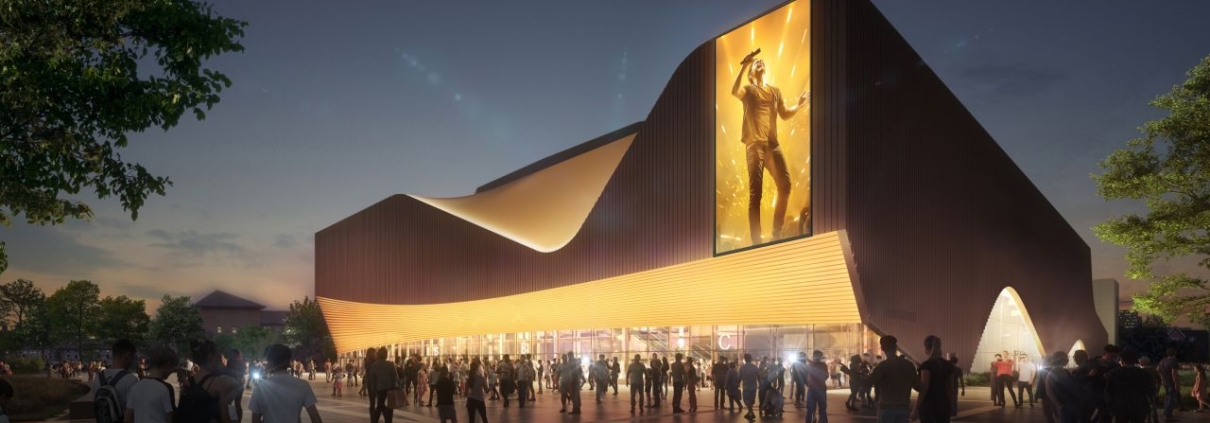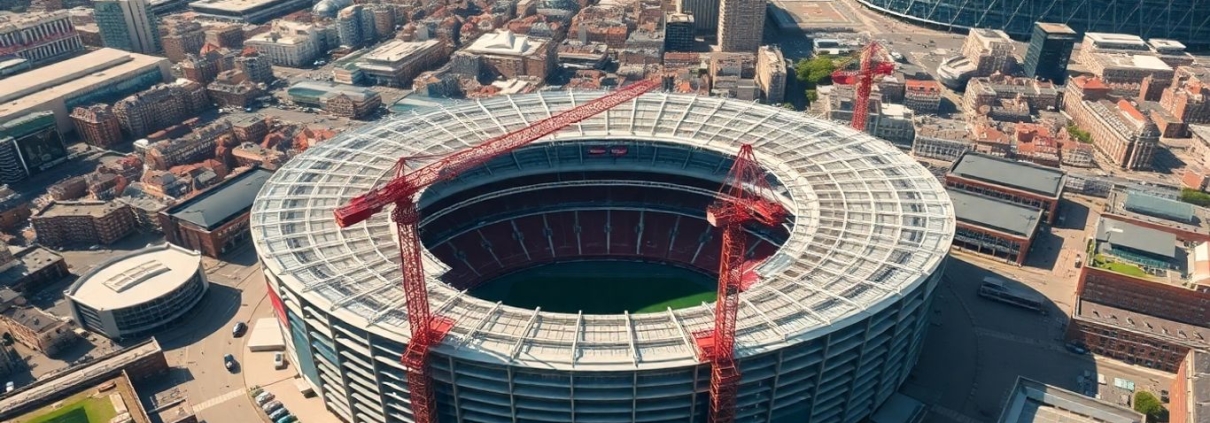McLaren Set to Transform Cardiff with £300m Indoor Arena at Atlantic Wharf
Cardiff saw a significant milestone this week as work commenced on the city’s long-awaited £300 million indoor arena at Atlantic Wharf, following news that McLaren Construction has secured the flagship scheme. Set to open in 2028, the development promises to reshape the music, entertainment, and cultural profile of the Welsh capital.
Key Takeaways
- McLaren Construction appointed main contractor for £300m Cardiff Arena
- The project will deliver a 16,500-capacity venue and 182-room hotel
- Scheduled for completion in 2028, the arena will anchor the Atlantic Wharf regeneration
- Over 1,000 jobs to be created during construction and operation
- Arena expected to attract more than a million visitors a year
A New Landmark for Cardiff Bay
The Cardiff Arena development is a centrepiece of the city’s ambitious Atlantic Wharf masterplan. Backed by Cardiff Council alongside partners Live Nation and Robertson Property, the plan extends far beyond the arena itself. Alongside the major events venue, the regeneration will see new cultural venues, offices, homes, a four-star hotel, leisure spaces, and public squares emerge over 30 acres in Cardiff Bay.
Designed by the architectural firms Populous and HOK, with interiors by Jump Studios, the arena draws inspiration from Cardiff Bay’s industrial past. Its distinctive, swooping façade features patinated corrugated panels and gold-toned accents, while generous glazing evokes the natural landscape of South Wales.
A Boost for Jobs and Cultural Profile
The arena will generate around 1,000 new jobs during its build and ongoing operation, supporting both skilled trades and long-term roles in hospitality and events. Once operational, it is predicted to attract over a million visitors annually, firmly establishing Cardiff as a major destination for international touring acts and cultural events.
Importantly, the seating bowl has been engineered for a compact footprint with sightlines and a crowd experience prioritised. Hospitality seating is integrated within the main arena, fostering a unified atmosphere among all guests.
Economic and Community Impact
City officials and project leaders highlight the transformative potential of the development for Cardiff’s economy and social landscape. Cardiff Council’s leader called it the most significant investment since the city’s stadium opened in 1999, underlining its importance for the region’s visitor economy, local business, and creative sector. The project also aligns with Cardiff’s Music City strategy, ensuring broad benefits from musicians and promoters to businesses and local communities.
Robertson Group and Live Nation echoed these sentiments, describing the arena as a “catalyst for growth” that will support regeneration in one of Wales’ most deprived areas, while also elevating Cardiff as a creative and entertainment powerhouse.
Looking Ahead
Rising construction costs—driven by inflation—mean the value of the scheme now tops £300 million. Major subcontractors have been named for groundworks, steelwork, piling, envelope, and MEP packages, reflecting the scale and complexity of the project.
With ground broken and main construction underway, Cardiff Arena is on track to become a new icon for Wales, reinforcing the city’s place on the world stage and promising lasting benefits for generations to come.
Further Reading
- McLaren gets going on Cardiff Arena, Construction Index.
- McLaren confirmed for £250m Cardiff arena, Construction Enquirer.
- McLaren confirmed to build £280m Cardiff arena and hotel, Construction News.
- McLaren confirmed for £280m Cardiff Arena scheme as team behind it inks financial close | News, Building.
- McLaren Breaks Ground on £300m Cardiff Arena as Project Reaches Key Milestone, BDC Magazine.



